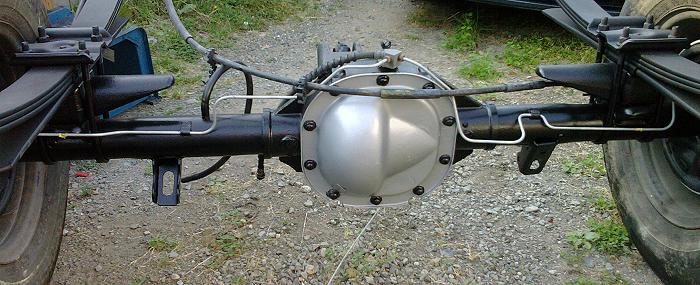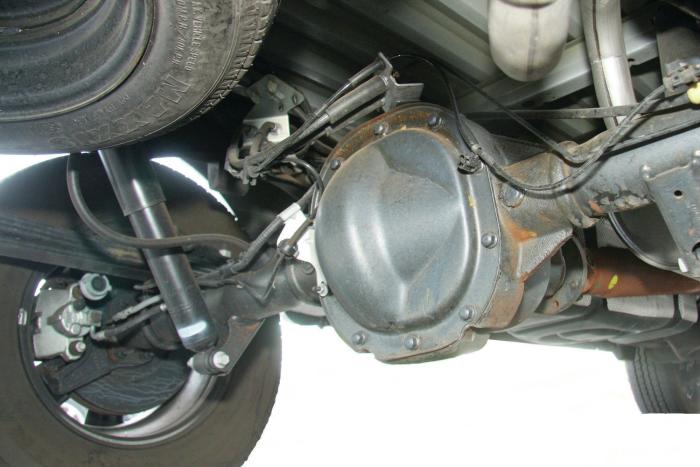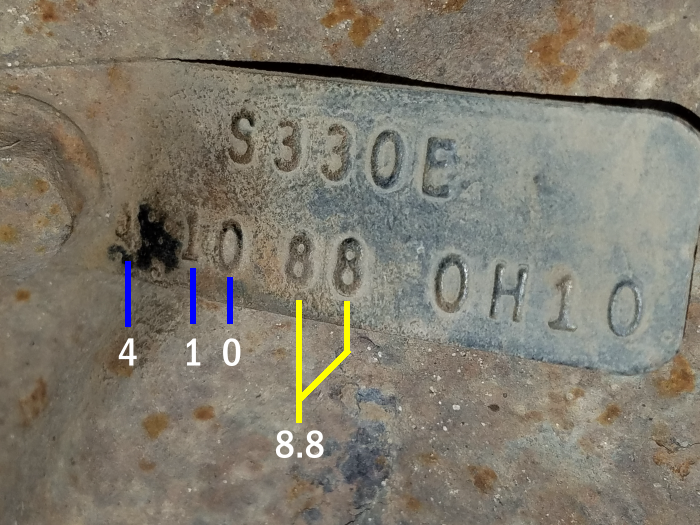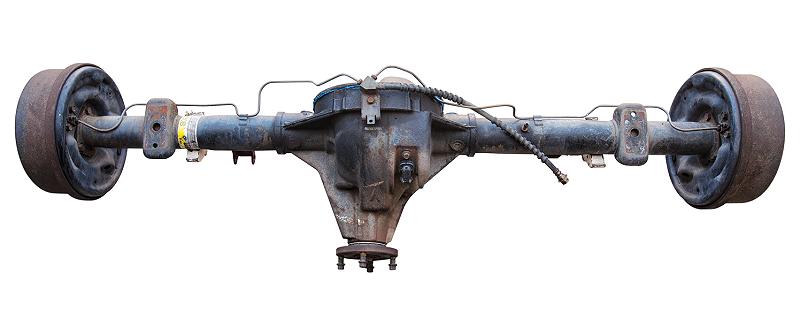Ford Ranger Rear Axles (1983–2011)
The Ford Ranger has used several rear axle types throughout its production history. This hub page provides a comprehensive overview of the rear axles used in Rangers from 1983 to 2011, including the 7.5-inch and 8.8-inch axles. Use the links below to explore detailed specifications, gear ratios, and visual identification guides for each axle type.
Ford Rear Axles Overview
- Ford 7.5-Inch Axle: 1983–2011 Rangers without a 4.0L V6. Gear ratios vary by model and year.
- Ford 8.8-Inch Axle: 1990–2011 Rangers with a 4.0L V6. Also found in many 1998–2011 Super Cab 4x4s regardless of engine.
- Dana M220 Axle: 2019–Present Rangers equipped with the modern Dana Advantek M220 (220mm) rear axle.
Ford 7.5-Inch Axle (1983–2011)
Most Ford Rangers without a 4.0L V6 engine came with the 7.5-inch rear axle. Commonly, 1998–2011 Super Cab 4x4s also feature this axle depending on configuration.
For full specifications, gear ratios, and historical details, visit our dedicated page: Ford 7.5-Inch Information & Specifications.
Ford 8.8-Inch Axle (1990–2011)
Rangers equipped with the 4.0L V6 from 1990–2011 generally came with the 8.8-inch axle. Many 1998–2011 Super Cab 4x4s also feature the 8.8-inch axle regardless of engine size.
For full specifications, gear ratios, and visual identification, see: Ford 8.8-Inch Information & Specifications.
Dana M220 Axle (2019–Present)
All modern Ford Rangers (2019–present) are equipped with the Dana Advantek M220 (220mm) rear axle. For detailed specs and identification, visit: Dana Advantek M220 Information & Specifications.
Visual Identification of Ford 7.5-Inch and 8.8-Inch Axles

Both axles use 10 bolts to hold on the cover, but the shapes differ noticeably. Below are example images for visual reference:

Ford 7.5-Inch rear axle above – Ford 8.8-Inch rear axle below.

Identification From Axle Tag

The axle tag is attached to the differential cover using one of the cover bolts. It indicates the gear ratio and axle size. Examples:

7.5-Inch axle with 3.73 gears.

8.8-Inch axle with 3.73 gears; ‘L’ between the ‘3’ and ’73’ indicates Limited Slip.

The tag above is from an 8.8-inch rear axle in a 2001 Ford Ranger 4×4 extended cab with 4.10 gears.
Federal Compliance Sticker Identification
The Federal Compliance Sticker located in the door jamb also provides the axle code:

If you look at the ‘AXLE’ section on the label above, you’ll see that this Ranger has a ‘F7’ axle code. Using the chart below, we know that this axle is a 7.5-Inch axle with a 4.10 limited slip.
| Ranger | |||
| Code | Description | Capacity | Ratio |
| 72 | open 6-7/8″ | 2200 | 3.08 |
| 74 | open 6-7/8″ | 2200 | 3.45 |
| 82 | open 7.5″ | 2750 | 3.08 |
| 84 | open 7.5″ | 2750 | 3.45 |
| 85 | open 7.5″ | 2750 | 3.55 |
| 86 | open 7.5″ | 2750 | 3.73 |
| 87 | open 7.5″ | 2750 | 4.10 |
| 89 (1992-1998) | open 7.5″ | 4.10 | |
| 89 (1999-2001) | open 7.5″ | 4.56 | |
| 91 | open 8.8″ | 2750 | 3.27 |
| 92 | open 8.8″ | 2750 | 3.08 |
| 95 | open 8.8″ | 2750 | 3.55 |
| 96 | open 8.8″ | 2750 | 3.73 |
| 97 | open 8.8″ | 2750 | 4.10 |
| 98 | open 8.8″ | 2750 | 4.56 |
| F4 | L/S 7.5″ | 2750 | 3.45 |
| F5 | L/S 7.5″ | 2750 | 3.55 |
| F6 | L/S 7.5″ | 2750 | 3.73 |
| F7 | L/S 7.5″ | 2750 | 4.10 |
| K6 | L/S 8.8″ | 4.10 | |
| R5 | L/S 8.8″ | 2750 | 3.55 |
| R6 | L/S 8.8″ | 2750 | 3.73 |
| R7 | L/S 8.8″ | 2750 | 4.10 |
| R8 | L/S 8.8″ | 2750 | 4.56 |
| (Note 4.56 geared axles ’99-up are 31-spline) | |||
Frequently Asked Questions
- How can I identify my Ford Ranger rear axle?
- Check the axle tag on the differential cover or the Federal Compliance Sticker in the door jamb.
- Which Rangers came with the 8.8-inch axle?
- Rangers with the 4.0L V6 from 1990–2011 and many 1998–2011 Super Cab 4x4s.
- Can I swap a 7.5-inch rear axle with an 8.8-inch?
- Yes, but modifications may be required for driveshaft length, gear ratio, and suspension alignment.
About The Author
Jim Oaks is the founder of The Ranger Station, one of the longest-running Ford Ranger enthusiast communities on the web. He has spent over three decades owning, modifying, repairing, and driving Ford Rangers on the street, trail, and cross-country routes.
Since launching TheRangerStation.com in 1999, Jim has documented thousands of real-world Ranger builds, technical repairs, drivetrain swaps, suspension modifications, and off-road tests contributed by owners worldwide. His work has been referenced by enthusiasts, mechanics, and off-road builders looking for practical, experience-based information rather than theoretical advice.
Jim’s hands-on experience includes long-distance overland travel, trail use, drivetrain and axle upgrades, suspension tuning, and platform comparisons across multiple Ranger generations. The content published on The Ranger Station is grounded in first-hand experience and community-verified data, not marketing claims or generic specifications.

